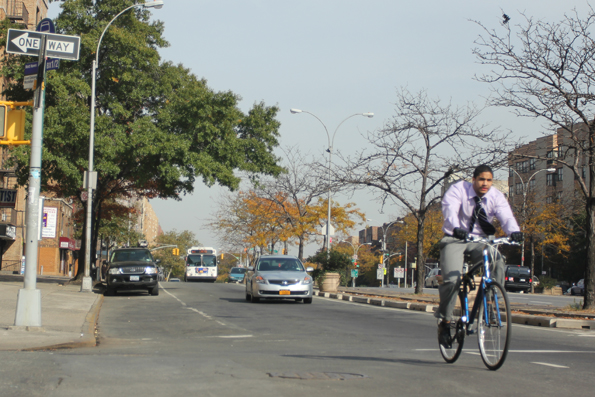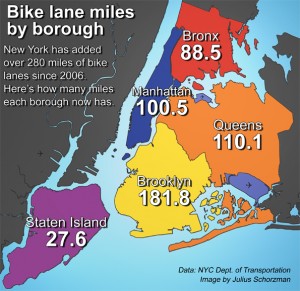Groups of cyclists aren’t a common sight in the South Bronx, especially on a blistering, late-summer day.
But on Aug. 26, community advocates from the Bronx River Alliance, Transportation Alternatives, Bronx Health Reach and other local organizations gathered on the corner of Whitlock Avenue and Westchester Avenue with helmets on their heads and their bicycles by their sides.
Their mission was to document the conditions on the roads linking Hunts Point Riverside Park, Concrete Plant Park and the soon-to-be-opened Starlight Park. For years, these groups have been asking the city’s Departments of Transportation and City Planning to improve the greenways within the parks. Now, city officials finally seem to be paying attention — and in an ongoing series of meetings, they’ve been asking the community firsthand what they want for the greenways.
Concrete Plant Park has been open to the public since 2009, and Hunts Point Riverside Park since 2007, but the community groups say both parks need upgrading.
View Current Conditions on the Bronx River Greenways in a larger map
“A part of the issue is that the on-street connections haven’t been properly connected,” said Devona Sharpe, greenway coordinator for the Bronx River Alliance. “And the condition of the street itself, it’s not inviting to users.”
The most direct path connecting the three different parks follows a north-south route along the Bronx River, with a U-turn around the busy Bruckner Expressway. From Hunts Point Riverside Park to Starlight Park, pedestrians and cyclists have to navigate through difficult terrain simply to get from one street to the next, as well as from one park to the next. Tree roots pushing through cracked sidewalks, shards of glass on the road and nonexistent bike lanes are just some of the physical barriers on the roads.
Though greenways exist inside the parks, they don’t fit into the grander scheme of urban planning in the area, said Linda R. Cox, executive director and Bronx River administrator of the Bronx River Alliance, at a community meeting on Sept. 6, after the cyclists documented the conditions on the roads.
“The greenway isn’t just about the parks,” she said at the meeting. “It really is about what we do on the streets.”
Staffers from the city’s Department of Transportation were also present to show their plans for the greenway and take comments and suggestions. According to Scott Gastell, spokesperson for the Department of Transportation, city planners have been working on a greenway proposal for the past three years. Their priority is to make the greenway more accessible to pedestrians and cyclists, but they must consider the large number of vehicles that cross the area every day.
Figuring out how to negotiate access for pedestrians and cyclists is a growing issue in the Bronx, where vehicles dominate the roads. In 2010, 169,550 vehicles traveled daily in both directions on the Sheridan Expressway, according to traffic volume reports from the state Department of Transportation. The number of vehicles passing through Westchester Avenue the same year was 108,770. To get to Starlight Park, which is scheduled to open this fall, residents and visitors must navigate both roads.
At the Sept. 6 meeting, representatives from the Department of Transportation said they are planning to visit local community boards in the next couple of months to gather more opinions on their greenway proposal before they submit it for official city approval.






